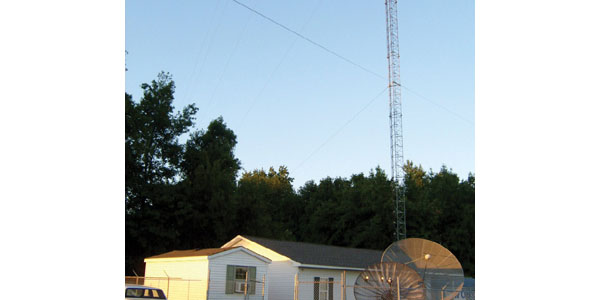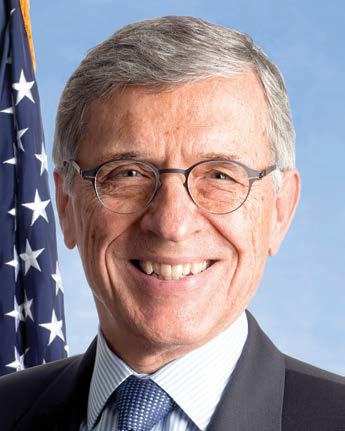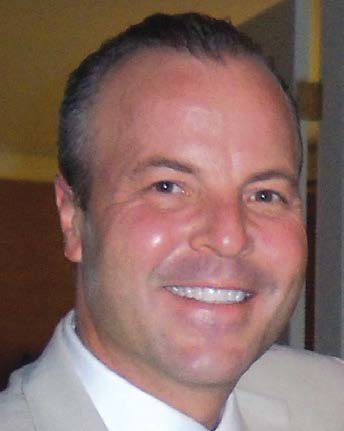Auction Leaves LPTV 'Burned at the Stake'

WASHINGTON—From Congress to courts to Wall Street to rural and low-power TV operators, vehement rhetoric has been flying in the past month about the plan to sell 126 MHz of broadcast spectrum.
“LPTV stations are being burned at the stake,” said Peter Tannenwald, a member of the Fletcher, Heald and Hildreth law firm and counsel to several LPTV and Class A stations.
The FCC “didn’t think about selling out the spectrum for TV translators,” added Paula Maes, president and CEO of the New Mexico Association of Broadcasters, who points out that the spectrum repacking “would leave huge pockets of the population without television, without emergency communications.”
Jim McDonald, a consulting engineer and president of the National Translator Association said stations will begin to suffer when it comes time to repack.
“Because they have both input and output channels, [the translators] could lose both channels,” he said. Like Maes, McDonald points out that since most of the country’s 10,000 translators and booster stations are in Western states—700 in Utah alone, 600 in California, 350 in Colorado—the commission has not paid sufficient attention to the impact on viewing in rural areas where cable is often not available or affordable.
Meanwhile, FCC Chairman Tom Wheeler’s commitment to start the auctions in early 2016 is also raising questions. In a downbeat financial assessment, AB Bernstein senior analyst Todd Juenger speculated, “There appears to be little reason why AT&T and Verizon would not try to delay the auction,” to preserve cash and slow down competitors’ expansion.
Separately, economist Peter Cramton, in a study funded by the Expanding Opportunities for Broadcasters Coalition, predicted that the spectrum sale to wireless carriers would bring in $84.9 billion and that the commission would pay $35 billion to stations that relinquish their airwaves. Some analysts observed that those levels may not meet the objectives originally envisioned.
And then there are the expected legal challenges. Although the U.S. Circuit Court of Appeals in Washington, in a unanimous ruling in June, threw out a plea by the National Association of Broadcasters and Sinclair Broadcast Group to halt the auctions, several other groups are primed to launch lawsuits when the FCC’s auction rules are posted. In particular, low-power TV licensees are expected to lead the charge since their channels will not reap financial rewards and will be likely be displaced quickly during the repacking process.
Get the TV Tech Newsletter
The professional video industry's #1 source for news, trends and product and tech information. Sign up below.
PRELUDE TO ‘THE RULEMAKING’

Tom Wheeler
The commission intends to preserve one vacant UHF channel in every market for use by white-space devices and wireless microphones. The plan would require LPTV, translator and Broadcast Auxiliary Service facilities “to demonstrate that their proposed new, displacement, or modified facilities, would not eliminate the last available vacant UHF television channel for use” by other entities.
In a blog (modestly titled “Crafting Balanced Incentive Auction Rules in the Public Interest”) posted just after that proposal surfaced, Wheeler insisted, “it is now time to end the back-and-forth and make decisions. No single party will be happy with everything we’ve done, but the final product is a balanced solution to a challenging situation with more moving parts than a Swiss watch.”
Republican Commissioner Ajit Pai called the vacant channel requirement “a switcheroo.” He said it gives “licensed white-space devices priority over full-power television stations in some circumstances,” noting that full-power television stations may “have to defer to unlicensed white-space devices if a television allotment proceeding would fill the last vacant channel.”
For his part, Wheeler has been aggressively accelerating his push for the auction. At a late June meeting with commercial (including LPTV) and public TV broadcasters, the chairman sought to assuage continuing concerns about the impact of the auction on broadcasters. The meeting came just days after the FCC rejected petitions by public broadcasters (via the Corp. for Public Broadcasting, the Public Broadcasting Service and the Association of Public TV Stations) which sought to assure that at least one non-commercial channel be reserved in every market after the repacking.
Although there has been speculation that Google, Apple, Intel or other Silicon Valley firms may plunge into the spectrum auction, most of the attention remains on existing wireless carriers, especially Verizon and AT&T’s wireless operations. T-Mobile pledged to fight Wheeler’s recommendation to limit the amount of spectrum reserved for smaller carriers (such as T-Mobile).
READY TO SELL
With all these contentious factors taking shape, the outlook remains cloudy for the auction rulemaking and the process during the rest of this year. Yet some broadcasters—and spectrum speculators—are looking forward to unloading their airwaves and reaping the financial rewards.

Gregory Herman
Gregory Herman, president and CEO of WatchTV Inc., which owns Class A and LPTV stations in Oregon, said he is “enthusiastic about the auction,” but he points out that “LPTVs have been trampled on.” Herman calls himself the “father of ‘flex use’” of the spectrum.
“The value of the spectrum massively eclipses the enterprise value,” he said. “Our aspiration is to create the opportunity to find the best use of the spectrum.” Herman says he’ll sell what he can, but might pursue other options “if the FCC doesn’t purchase our stations.”
In particular, Herman is unhappy with broadcasters’ reliance on old technology. He says he’s frustrated with the industry, which uses 25-year old digital TV technology and a 20-year old standard.
“We need to develop businesses that depend on our ability to build wireless services,” Herman said. “I’m interested in taking this resource and developing something viewers want,” although he only describes plans “to use the spectrum in ‘interesting ways’ such as fixed-form modulation.” He declined to disclose specific plans for spectrum use.
He also called the auction “overly complex,” adding, “that’s of the FCC’s own design.”
Burt Ellis, chairman and CEO of Ellis Capital and partial owner of KDOC-TV in Los Angeles, characterizes the spectrum as “a way to monetize the station, perhaps twice.” He plans to create a channel-sharing relationship and continue to broadcast KDOC’s mix of ethnic, religious and syndicated programs. Although Ellis—who bought the station about a decade ago—declines to identify the potential channel-share partner, it is widely expected to be KOCE-TV, the primary Los Angeles public TV station with which KDOC has been sharing facilities for nearly 20 years.
Ellis calls the auction opportunity “stupendous.”
“This is the last great chance to buy a national swath of spectrum for a mobile network,” he said, adding that he expects that the forward auction “will be more than sufficient to clear the tight markets and repack the rest.” As an investor, he said, “This is as close as there is to a ‘free option.’ There’s a huge upside.”
For stations that don’t sell spectrum, Ellis said the auction will “cull the herd,” making surviving stations (and their commercial inventory) more valuable.
Ellis acknowledges that, “now the issues involve ‘the mechanics,’” his description of the process for what channels will be cleared and what will be the pricing. He expects that with statmuxing capability and increased compression capabilities, KDOC “can preserve the digital channel.”
Tannenwald, the LPTV attorney, foresees a tumultuous process during and after the auction, whenever it takes place.
“It depends on how much processing power the FCC puts into the reassignments,” he said, referring to the task of repacking channels, especially LPTV stations that aren’t subject to the 39-month lead time now expected for full-power station moves.
And McDonald from the translator association, expects the battle to protect translators will persist, especially as policy-makers become aware of the impact on “elderly and disadvantaged viewers.”
Gary Arlen, a contributor to Broadcasting & Cable, NextTV and TV Tech, is known for his visionary insights into the convergence of media + telecom + content + technology. His perspectives on public/tech policy, marketing and audience measurement have added to the value of his research and analyses of emerging interactive and broadband services. Gary was founder/editor/publisher of Interactivity Report, TeleServices Report and other influential newsletters; he was the long-time “curmudgeon” columnist for Multichannel News as well as a regular contributor to AdMap, Washington Technology and Telecommunications Reports; Gary writes regularly about trends and media/marketing for the Consumer Technology Association's i3 magazine plus several blogs.

